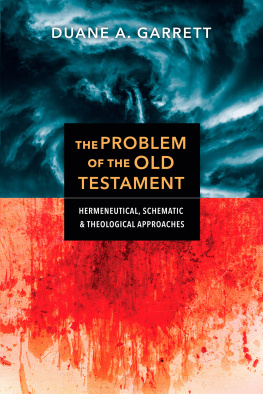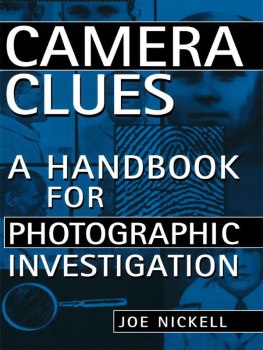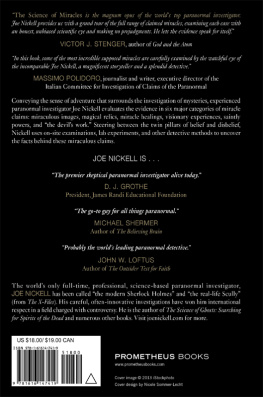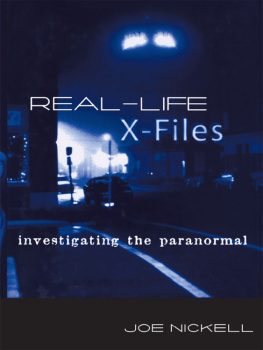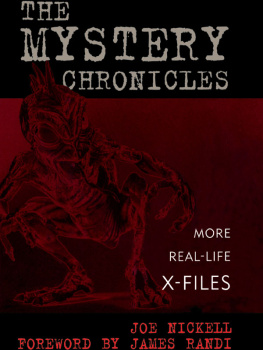Published by The History Press
Charleston, SC
www.historypress.com
Copyright 2021 by Duane S. Nickell
All rights reserved
First published 2021
E-Book edition 2021
ISBN 978.1.4396.7288.4
Library of Congress Control Number: 2021934136
Print Edition 978.1.4671.4948.8
Notice: The information in this book is true and complete to the best of our knowledge. It is offered without guarantee on the part of the author or The History Press. The author and The History Press disclaim all liability in connection with the use of this book.
All rights reserved. No part of this book may be reproduced or transmitted in any form whatsoever without prior written permission from the publisher except in the case of brief quotations embodied in critical articles and reviews.
To the several thousand students whom I had the privilege of teaching during my thirty-year career. I hope you learned something. Thanks for the memories!
INTRODUCTION
When you think of Indiana, what things come to mind? Automobile racing, basketball and corn, right? The word science probably doesnt occur to you. If you were asked to name some famous Hoosiers, my guess is you would cite athletes, actors, musicians, writers, television personalities and political leaders. Would you name any scientists? Probably not. But Indiana has a rich scientific heritage. As we shall see, just a few years after achieving statehood, Indiana was home to a community of scientists at New Harmony. Few states can boast of such a strong scientific presence so early in its history.
What accounts for this state of affairs? After all, scientists are the real heroes of the modern world. Instead of making stuff up, they figure things out. And when you figure out how the universe works, you can apply that knowledge to solve problems and improve lives. Science can cure diseases, find new sources of energy and solve the climate crisis. Science, when applied, creates new technologies like cellphones and computers. Science isnt perfect, but its the best tool weve got.
The sad fact is that in todays world, science doesnt always get the respect it deserves. This is especially true in the United States, where a significant segment of the population doesnt trust egg-headed intellectuals and experts. Even some of our political leaders address problems by going with their gut instead of following the data. Not enough people understand basic scientific ideas, and some reject well-established scientific principles. Expert scientific opinion is often ignored and sometimes ridiculed. For example, although there is a strong scientific consensus that climate change is a real problem largely caused by the burning of fossil fuels, many people stubbornly refuse to accept it. Too many people simply believe what they want to believe, reason and rationality be damned!
This book is a small step toward solving this big problem. It is a celebration of science and scientists in Indiana. The book begins with a chapter on the dawn of science in the Hoosier State. The remainder of the book consists of biographical sketches of seventeen scientists who are, in some significant way, connected to the state. Each biography begins with the name of the scientist along with their scientific field, major contribution and connection to Indiana, followed by a quote by the scientist. The biographies are presented in chronological order according to birth year. Each biography traces the life of the scientist and includes a simple explanation of their scientific contributions.
What were the selection criteria for the scientists included in this book? The first requirement was a strong connection to Indiana. A significant fraction of their lives had to be spent actually living and working in Indiana or they must have earned a degree from a college in the state. What is a significant fraction? Since the time normally required for earning a degree is four years, I arbitrarily set this as the minimum time. Thus, spending a year or two in the state was not sufficient to justify inclusion in this book.
The second requirement was that the scientists accomplishments must be of the highest order. One obvious indicator of the significance of scientific work is winning the Nobel Prize. Twelve of the scientists chosen for inclusion in this book are Nobel laureates. But the Nobel Prize is not a perfect indicator of scientific achievement. The Nobel Prize is awarded for discoveries or for theoretical work that has been verified by experiment or observation. It is not awarded for unsubstantiated theories. Also, the Nobel Prize is awarded only in the scientific fields of physics, chemistry and physiology or medicine. There is no Nobel Prize explicitly for biology, although physiology and medicine are encompassed by biology. There is no Nobel Prize for astronomy, although the field of physics was eventually interpreted more broadly to include astrophysics. Thus, five of the seventeen scientists portrayed in this book have not won a Nobel Prize but nevertheless made substantial contributions to science.
Those are the criteria I used to choose the scientists. To be clear, Im defining science narrowly to include only the natural sciences of biology, chemistry, physics, geology, astronomy and their associated disciplines. Natural science does not include engineering, invention or the social sciences. The list is, I freely admit, imperfect and incomplete. It is simply my subjective opinion of who should be included. I regret that all the scientists portrayed in this book are male. I wish I could have justified including Elinor Ostrom, a professor from Indiana University who won the Nobel Prize for Economics and the first woman ever to win the award in that discipline. But alas, economics is not a natural science. The sad fact is that until recently, women were not afforded the same educational or professional opportunities as men. That situation is slowly changing as more and more women enter scientific fields.
The Nobel Prize Medal. Shutterstock.
I hope you enjoy reading this book as much as I enjoyed writing it. Let us begin!
SCIENCE IN INDIANA BEGINS IN NEW HARMONY
Science in Indiana began in a place called New Harmony, in the southwestern part of the state on the banks of the Wabash River. It was there in 1814 that a splinter group of German Lutherans formed a religious commune called Harmonie. The sect had come to America from Germany in 1804, settled in Pennsylvania for a few years and then moved on to Indiana territory. Their authoritarian leader was George Rapp, a fundamentalist preacher who believed that Jesus Christ would soon return and life as we know it would end. Procreation was thus rendered unnecessary, so Rapp insisted that all members of his flock, married or single, remain celibate. The Rappites, as they were called, perhaps refocusing their pent-up sexual energy, spent the next ten years building a successful and prosperous community. They cleared two thousand acres of land and built forty houses, two churches, a school, a library, a sawmill, a distillery, a greenhouse, a gristmill and a five-story stone granary. They grew crops, planted an orchard and cultivated a vineyard. The commune was economically successful, selling a variety of goods including beer, wine, whiskey and woolens.





